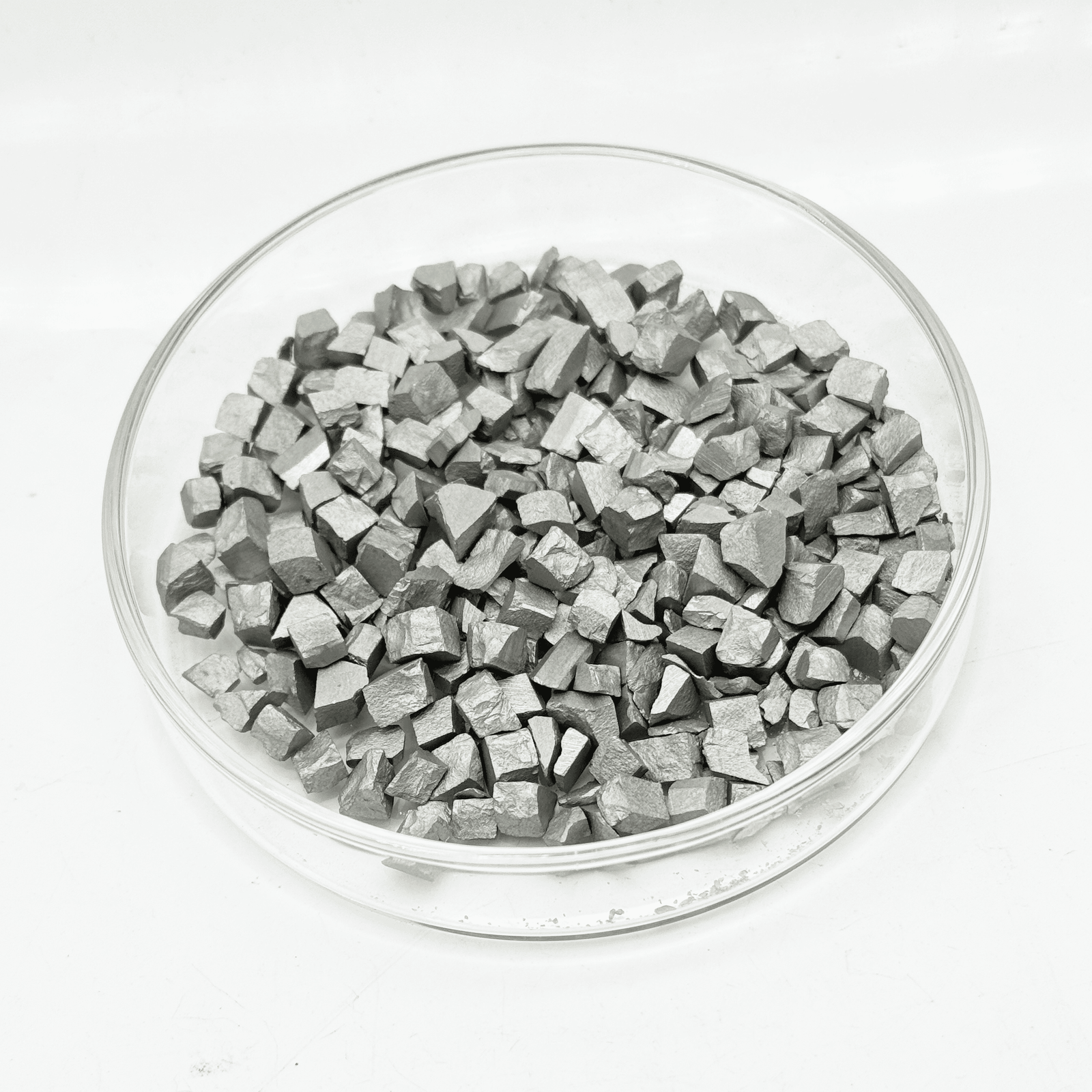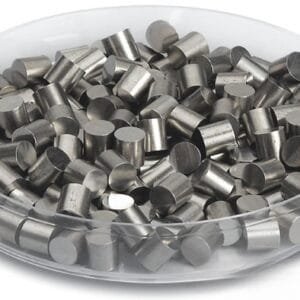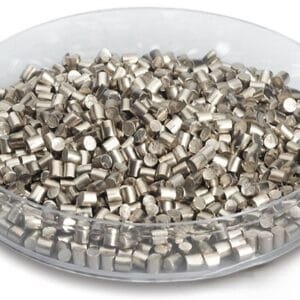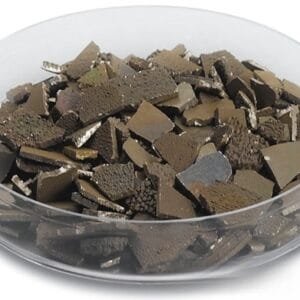Germanium Telluride Evaporation Materials Overview
Germanium telluride (GeTe) is a high-purity ceramic material utilized in evaporation processes, critical for producing superior-quality deposited films. At TFM, we specialize in delivering germanium telluride evaporation materials with exceptional purity levels of up to 99.9995%. Our rigorous quality assurance measures ensure the reliability and consistency of our products.
Related Products: Germanium Evaporation Materials, Telluride Ceramic Evaporation Materials
Specifications of Germanium Telluride Evaporation Materials
| Material Type | Germanium Telluride |
| Symbol | GeTe |
| Appearance/Color | Solid |
| Melting Point | 725 °C (1,337 °F; 998 K) |
| Density | 6.14 g/cm3 |
| Purity | 99.9% ~ 99.999% |
| Shape | Powder/ Granule/ Custom-made |
Applications of Germanium Telluride Evaporation Materials
Germanium telluride evaporation materials are employed in various deposition techniques including:
- Semiconductor Deposition
- Chemical Vapor Deposition (CVD)
- Physical Vapor Deposition (PVD)
They are primarily used for optical applications such as wear-resistant coatings, decorative finishes, and display technologies.
Packaging of Germanium Telluride Evaporation Materials
To maintain the integrity and quality of our germanium telluride evaporation pellets, we package them in plastic vacuum bags. This packaging safeguards against damage during storage and transport. Each package also includes a Certificate of Analysis (COA) for the raw material.
Contact Us
TFM is committed to providing high-purity germanium telluride evaporation materials tailored for semiconductor, CVD, PVD, and optical applications. Our integrated engineering, manufacturing, and analytical capabilities set us apart in the industry. Reach out to us today for inquiries and further information.


 MSDS File
MSDS File



Reviews
There are no reviews yet.